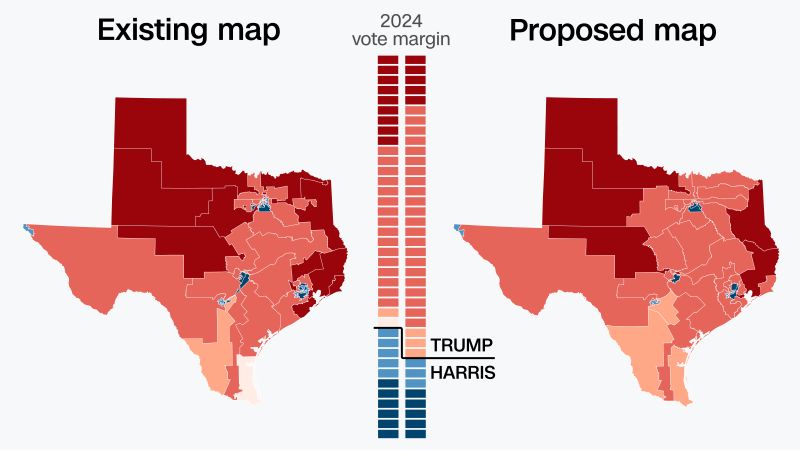In the political landscape of Texas, the upcoming congressional map proposed by Republican lawmakers has stirred considerable attention due to its strategic design aimed at distributing Republican voters effectively. The plan is crafted in such a way that, in the previous year, even President Donald Trump would have won all 30 targeted congressional districts by a substantial margin of at least ten percentage points. The implications of this proposed map could significantly alter the representation of the state, especially in the context of an ever-contested political arena.
As Republican legislators maneuver to solidify their dominance, they have astutely focused on five Democratic-held districts. Their strategy has involved a calculated removal of predominantly Democratic areas from these districts, redistributing these populations to other districts that are already considered safe for either party. The end result aims to supplant these blue zones with areas more favorable to the Republican agenda, effectively tightening their grip on Texas politics.
Given the Republican party’s success in the state during the recent elections, particularly in 2024 where Trump garnered nearly a 14-point victory, this map seems poised to perform exceptionally well for the GOP, presuming similar outcomes in future elections. However, the possibility remains that if subpar election performance occurs—similar to the 2020 election where Trump’s lead was less than half of the margin from 2024—those districts may evolve into battlegrounds, thereby becoming significantly more competitive for both parties.
Analyzing the specifics, the proposed redistricting reveals various changes to distinct districts that are designed to skew electoral probabilities in favor of the Republican Party. Notably, the ninth district, centered in Houston, is set for a dramatic transformation. Under the new blueprint, this district would transition from its Democratic roots based in southern Houston to a Republican stronghold situated in eastern Harris County. Currently represented by Democratic Rep. Al Green, there are speculations that he may shift his political ambitions to the neighboring 18th District, which has remained vacant since Rep. Sylvester Turner’s passing, subsequently absorbing much of Green’s constituency and tilting further toward Democratic leanings.
Moreover, in Dallas, the GOP’s strategy continues to unfold as parts of Rep. Julie Johnson’s 32nd District become merged with Rep. Marc Veasey’s 33rd District, leading to a dilution of Democratic strongholds. The redefined 32nd District would extend deeper into Republican-dominated counties including Rockwall, Hunt, Rains, Wood, Camp, and Upshur, creating a more challenging environment for Democratic candidates in future elections.
In another example, the mapping adjustments proposed for District 35, which spans from Austin to San Antonio, highlight a significant pivot. The Republican agenda intends to dismantle Rep. Greg Casar’s current representation, assimilating some Democratic areas while expanding into historically Republican territories in the counties of Guadalupe, Karnes, and Wilson. Consequently, the Democratic stronghold connecting the two cities will be marginalized, curtailing representation for Democrats in that region.
Continuing with this trend, District 28, while seeing the least partisan shift, still faces modifications to enhance Republican favor. Trump had won the existing district by seven points during the last election, and the proposed changes aim to amplify that advantage by removing certain Democratic areas while integrating regions that lean Republican. Similarly, District 34, represented by Democrat Vicente Gonzalez, will experience a more pronounced shift toward Republicanism as the new map illustrates a clear strategy to modify its electoral dynamics by excluding Democratic-leaning areas.
Both District 28 and District 34 cater to Hispanic-majority populations, illustrating a notable trend where these demographics have significantly moved toward Republican preferences in recent years. This political evolution raises the stakes for the Republican Party as they aspire to fortify their wins in future elections, particularly in 2026, where maintaining this momentum will be crucial to their success.
In sum, the redistricting efforts in Texas are emblematic of the ongoing struggle for power and representation within the state’s evolving political context. While designed to favor Republican candidates and amplify their presence, these changes also provoke challenges and emphasize the dynamic nature of voter sentiment and demographic shifts that could reshape the electoral map in the coming years.











